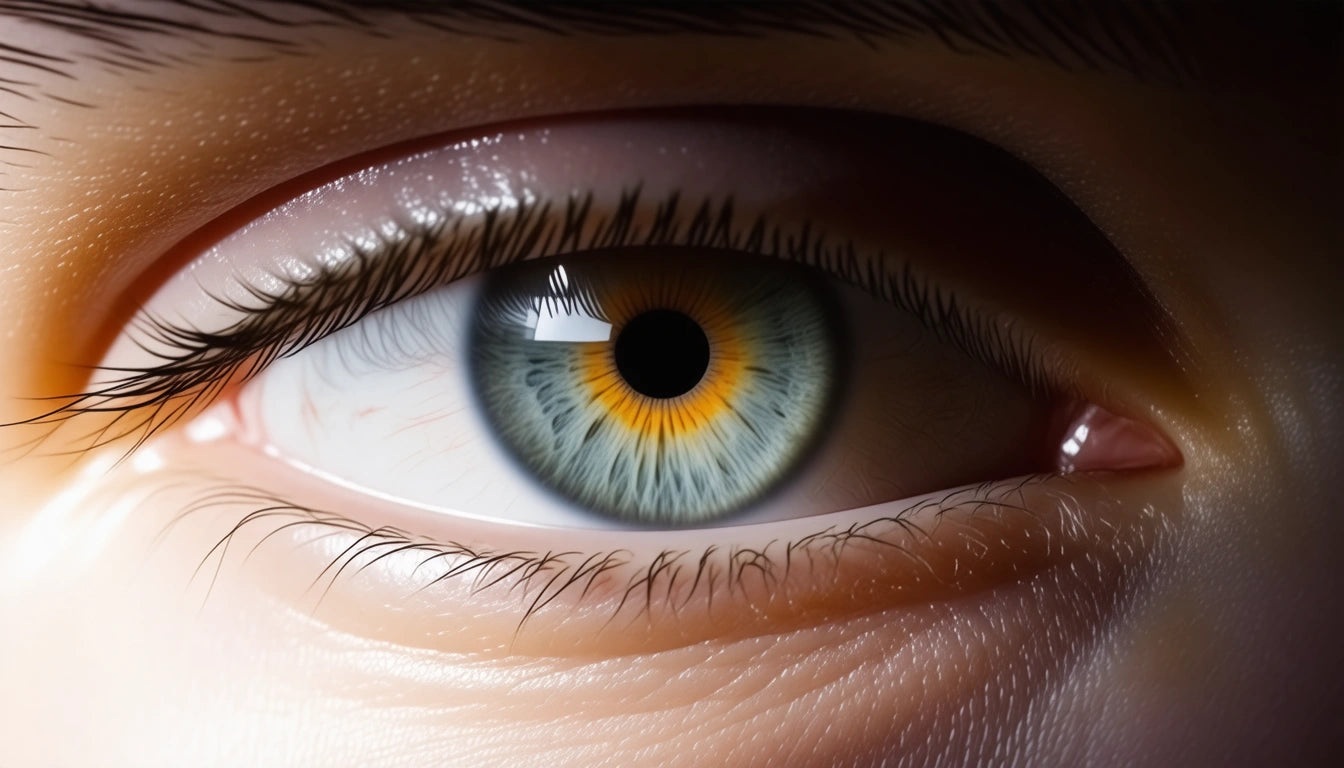Table of Contents
Can Weed Help or Harm Glaucoma and Cataracts?
The relationship between cannabis and eye health, particularly for conditions like glaucoma and cataracts, has been the subject of ongoing research and debate. Many patients with these conditions wonder if cannabis might offer relief or potentially cause harm. This comprehensive guide explores what science tells us about whether weed can help glaucoma, its effects on cataracts, and important considerations for those considering cannabis as a complementary approach to eye health.
Understanding Glaucoma and Cataracts
Before examining cannabis's effects, it's important to understand these common eye conditions:
Glaucoma Basics
Glaucoma is characterized by increased intraocular pressure (IOP) that damages the optic nerve, potentially leading to vision loss and blindness. It affects over 3 million Americans and is a leading cause of irreversible blindness worldwide. The primary treatment goal is reducing eye pressure to prevent optic nerve damage.
Cataracts Explained
Cataracts involve clouding of the eye's natural lens, causing blurry vision, decreased color perception, and increased sensitivity to glare. Unlike glaucoma, cataracts are typically treated surgically by removing the clouded lens and replacing it with an artificial one.
Cannabis Effects on Glaucoma: Potential Benefits
Research has shown that cannabis can temporarily reduce intraocular pressure, which is the primary factor in glaucoma progression. Studies on cannabis and glaucoma treatment indicate that THC, the primary psychoactive compound in cannabis, can lower IOP by 25-30% for 3-4 hours in some patients.
The mechanism behind this effect involves cannabinoid receptors in the eye's ciliary body, which help regulate fluid production. When activated by THC, these receptors can reduce fluid production, thereby lowering pressure within the eye.
Why Does Weed Help Glaucoma Temporarily?
Cannabis helps glaucoma primarily through:
- Reducing aqueous humor production (the fluid in your eye)
- Improving outflow of eye fluid
- Potential neuroprotective effects on the optic nerve
- Vasodilation effects that may improve blood flow to the eye
These mechanisms explain why some patients report immediate relief after cannabis use. However, the effects are short-lived, creating significant limitations for practical treatment.
Limitations and Concerns of Cannabis for Eye Conditions
Despite potential benefits, several factors limit cannabis as a primary glaucoma treatment:
Short Duration of Action
The pressure-reducing effects typically last only 3-4 hours, requiring frequent dosing throughout the day and night. This is impractical compared to eye drops that can work for 12-24 hours or surgical interventions with lasting effects.
Psychoactive Effects
The doses needed to effectively reduce eye pressure often produce significant psychoactive effects, potentially impairing daily functioning. Cannabis can affect vision and pupil size, which may be counterproductive for patients already experiencing vision challenges.
Tolerance Development
Regular cannabis use leads to tolerance, requiring increasing doses to maintain the same IOP-lowering effect, further complicating long-term treatment viability.
Smoking Concerns
Smoking cannabis introduces additional risks, including respiratory issues and red eyes that may worsen discomfort. For patients managing their medication in various settings, our secure storage solutions for medical cannabis help maintain freshness while providing discreet containment options.
Cataracts and Cannabis: Is There a Connection?
Unlike glaucoma, there is limited evidence suggesting cannabis directly helps with cataracts. Cataracts involve physical changes to the eye's lens that typically require surgical intervention.
Does Weed Help With Cataracts?
Current research does not support cannabis as an effective treatment for cataracts. While some patients report subjective improvements in symptoms, no clinical evidence suggests cannabis can reverse or slow cataract progression.
Potential Indirect Benefits
Cannabis may offer indirect benefits for cataract patients through:
- Pain management following cataract surgery
- Reduction of inflammation
- Anxiety relief before procedures
- Potential antioxidant properties that might support overall eye health
Risk Factors and Concerns
Some research suggests long-term, heavy cannabis use might actually contribute to oxidative stress, which is a risk factor for both cataracts and glaucoma. However, these findings remain preliminary and inconclusive.
Medical Cannabis Considerations for Eye Health
For patients considering cannabis for eye conditions, several factors warrant attention:
Consultation With Specialists
Always discuss cannabis use with both an ophthalmologist and a cannabis-knowledgeable physician. This ensures coordination of care and monitoring of potential interactions with conventional treatments.
Delivery Methods
If considering cannabis for eye conditions, delivery methods matter:
- Smoking may introduce additional irritants to the eyes
- Vaporization reduces combustion byproducts
- Oral forms provide longer-lasting effects but slower onset
- Topical cannabis eye drops are being researched but remain experimental
CBD vs. THC for Eye Health
Interestingly, while THC reduces intraocular pressure, some studies suggest CBD might temporarily increase it. This highlights the importance of understanding specific cannabinoid effects rather than generalizing about cannabis as a whole.
Research and Future Directions in Cannabis Eye Treatments
The future of cannabis in ophthalmology looks promising despite current limitations:
Targeted Cannabinoid Therapies
Researchers are developing cannabinoid-based medications that specifically target eye receptors without psychoactive effects. These could potentially provide the benefits of cannabis for glaucoma without the limitations of whole-plant use.
Long-Acting Formulations
Extended-release cannabis formulations could address the short duration of action, making treatment more practical for daily use. This remains an active area of research with potential breakthroughs on the horizon.
While cannabis shows promise for temporarily reducing intraocular pressure in glaucoma patients, it currently falls short as a primary treatment due to practical limitations. For cataracts, evidence remains insufficient to recommend cannabis as an effective intervention. Patients should work closely with healthcare providers to develop comprehensive treatment plans that may include conventional treatments alongside carefully monitored cannabis use if appropriate for their specific situation.











Leave a comment
All comments are moderated before being published.
This site is protected by hCaptcha and the hCaptcha Privacy Policy and Terms of Service apply.